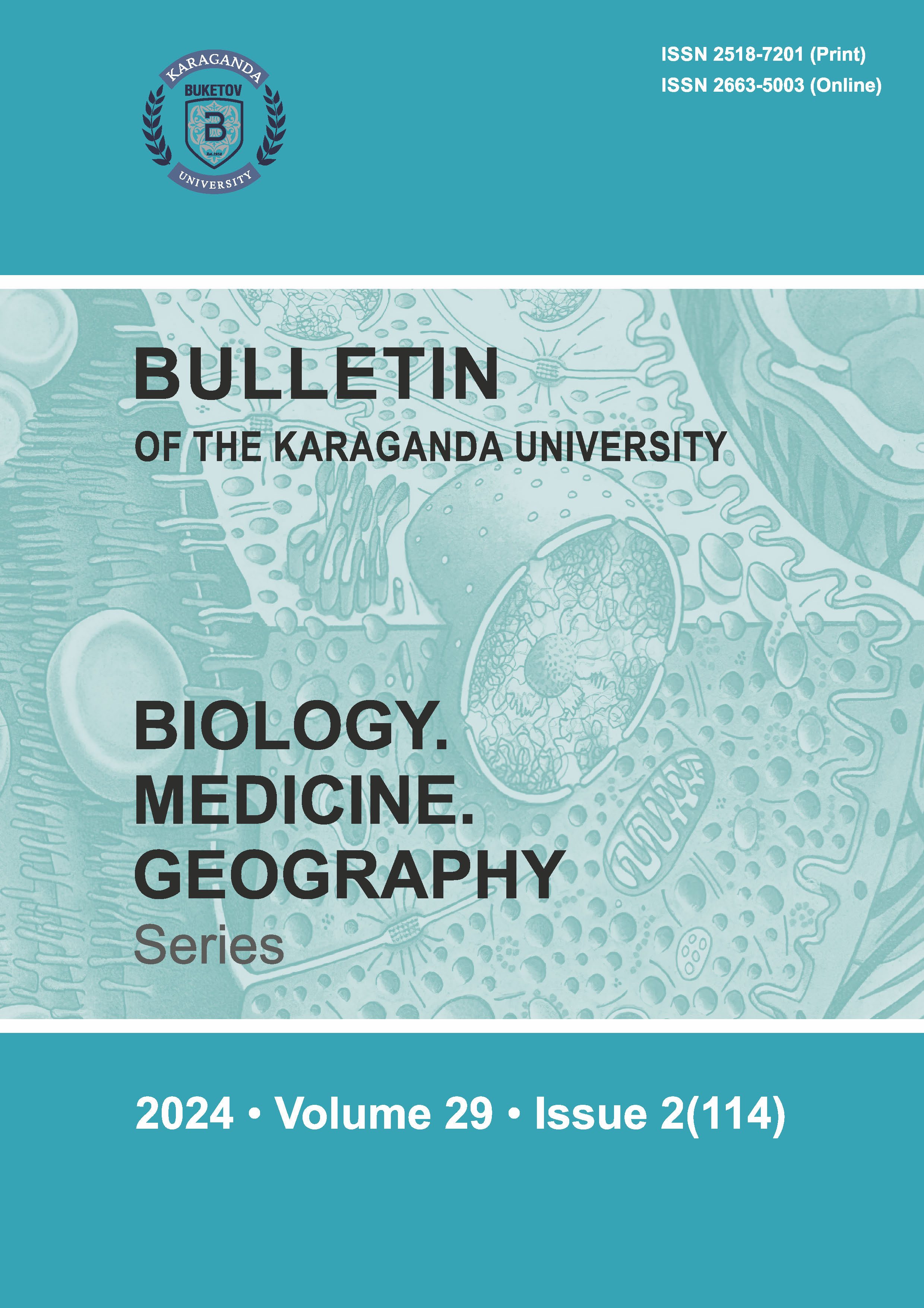Research on Botrytis cinerea-caused gray rot disease in strawberries with Carpathian genus bees and entomovector technology
DOI:
https://doi.org/10.31489/2024bmg2/29-41Keywords:
gray rot, Carpathian wasp, trichodermin, entomovector technology, biopreparation, lesion, biocompatibility agentAbstract
Gray rot is a widespread disease that is harming a lot of cultivated plants worldwide. It seriously impairs the strawberry industry's profitability by causing harm to the crop both during and after harvest. The article describes how biocontrol tests were conducted against the gray rot disease that affects strawberry plants, with the use of entomovector technology that uses biopreparations and bees. As a consequence of the study of the disease of gray rot of strawberries caused by the fungus Botritis cinerea with entomovector technology, the fight against the disease is carried out. Carpathian genus pollinating bees are employed as an entomovector agent during the investigation. They are members of a widely distributed bee order, and before this study, there was ample evidence that they boost production through plant pollination. The pathogen Gliocladium catenulatum, which is the basis for the medicine Prestop-Mix, as well as Trichoderma asperellum Botrytis cinerea identified from local soil, are suppressed by the drug as a biopreparation, according to research using entomovector technology. The article presents the results of a study of the disease of gray rot in experimental areas of strawberry fields in the Eastern region, caused by the fungus Botritis cinerea, using entomovector technology. By comparing the results with control options, it was determined that using Carpathian bees to apply biofungicide is one of the most efficient ways to combat gray rot damage to strawberry plants. Dispensers were placed in specially designed apiaries. During an investigation into the battle against Gray rot disease in Symphony strawberries cultivated in dedicated research areas, the impact of fruit weight following pollination as well as the effect of both pollination and the biocontrol agent on overall weight were discovered. Both the quantity of strawberry blooms and fruit production are rising. The study's findings demonstrated that one of the best strategies for preventing gray rot damage to strawberry plants is to employ biofungicide in conjunction with Carpathian genus bees. However, weather conditions will directly affect how successful control efforts are.



